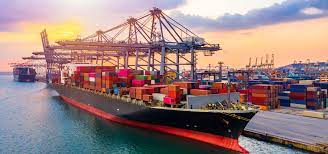As the global economy continues to evolve, the importing and exporting industry plays a pivotal role in driving growth and fostering international trade relationships. An industry perhaps not readily explored by mainstream media, importing and exporting goods is an integral part of our world today.
Mahmoud Eid is an experienced Houston-based entrepreneur who has made a name for himself in the world of importing and exporting. As director of a successful general supply company, he has a unique insight into what can be expected in the import and export industry in the future.
“I’m expecting our industry is going to see a lot of e-commerce in terms of the global trade landscape. In the coming years, the importing and exporting industry is expected to see a surge in cross-border e-commerce transactions,” says Eid. “The convenience and accessibility of online shopping are driving our businesses to tap into those international markets, thus increasing the need for imports.”
Increase focus on sustainable practices
Sustainability has become increasingly important to people across the globe, and, yes, it is expected to influence the importing and exporting industry. Consumers and businesses alike are increasingly demanding environmentally friendly practices throughout the supply chain.
“Predictions suggest that the industry is for sure going to see a shift towards sustainable sourcing, packaging, and transportation methods,” explains Houston’s Mahmoud Eid. “Exporters are going to benefit from aligning their operations with eco-friendly practices, enhancing their competitiveness in the global marketplace.”
Digital transformation and advancement in technology
The digital transformation wave has already begun to reshape the importing and exporting industry. Advanced technologies including the blockchain, artificial intelligence, and the Internet of Things are already streamlining processes, reducing costs, and improving efficiency.
“I’m expecting businesses will increasingly adopt these technologies to optimize their operations,” says Eid. “They’re no doubt going to enhance logistics efficiency and mitigate risks associated with international trade.”
Diversification of trading partnerships
While the United States remains Canada’s largest trading partner, there is a growing emphasis in the industry on diversifying trade relationships. According to Mahmoud Eid, he predicts that Canada intends to expand trade ties with emerging economies in Asia, Latin America, and the Middle East.
“Efforts to secure free trade agreements with countries such as China and India demonstrate the government’s commitment to exploring new markets,” explains Eid. “This strategy could open up new opportunities for Canadian businesses to expand their import and export activities.”
Impact of geopolitical factors
Geopolitical factors including trade disputes, regulatory changes, and political instability can have a significant influence on the importing and exporting industry. Eid expects that maintaining strong diplomatic relations and actively participating in international trade agreements will be vital to those in the industry. Moreover, staying on top of global events and adapting to changing trade policies will be essential for businesses to navigate potential challenges and capitalize on opportunities.
“It’s an interesting space to keep an eye on when you work in the world of international importing and exporting,” says Eid. “I’m excited to see what the future holds, I’ll be keeping a close eye on how things continue to unfold going forward.”
